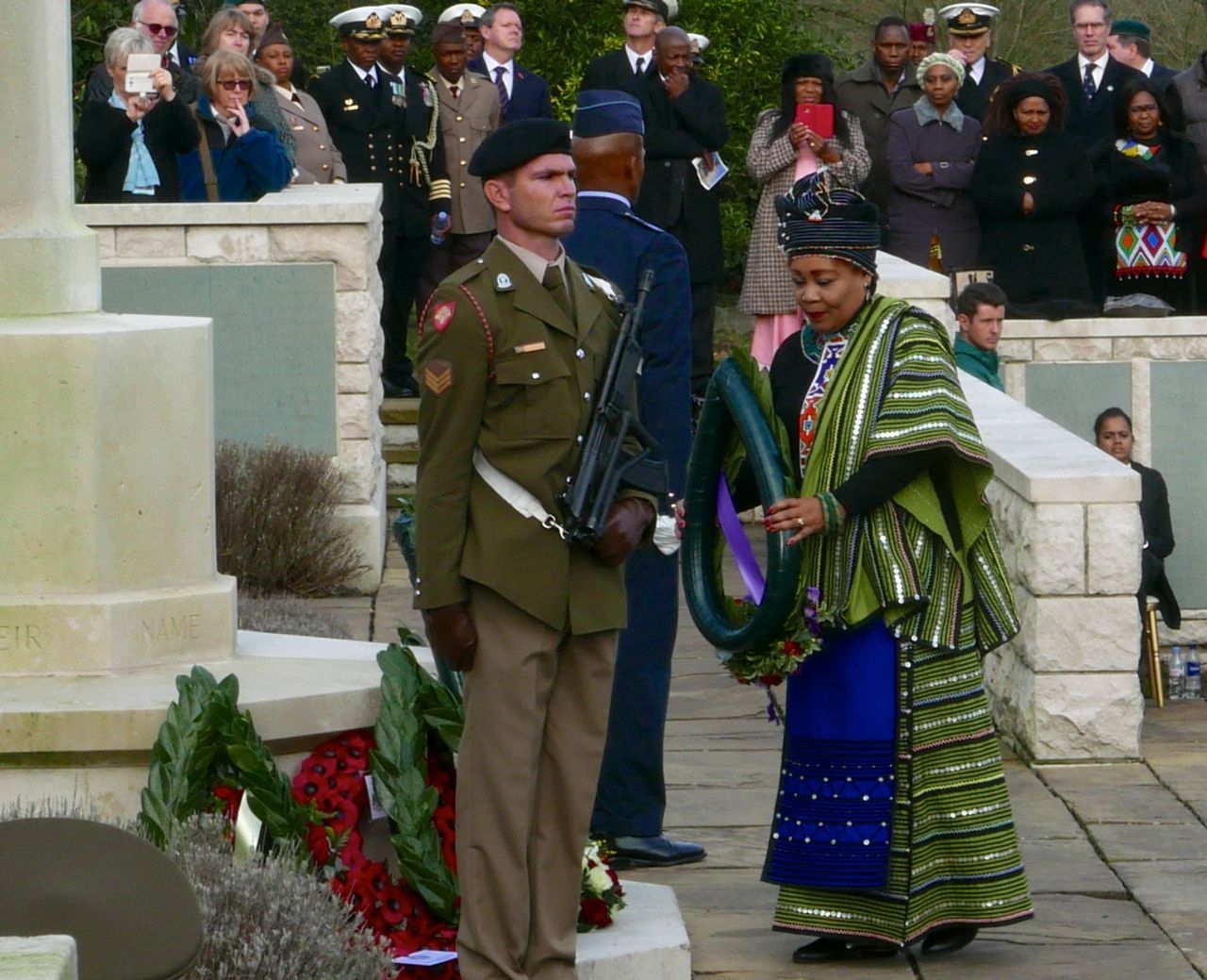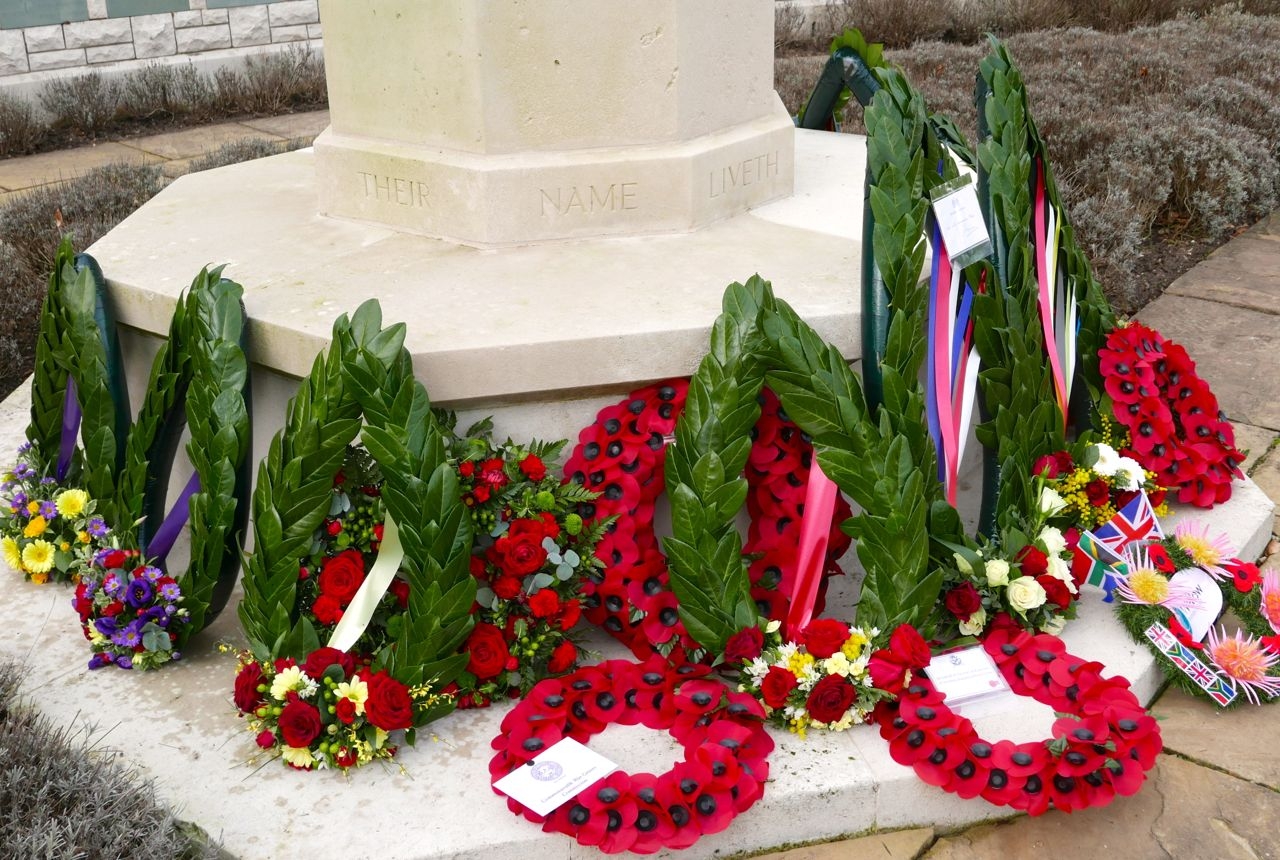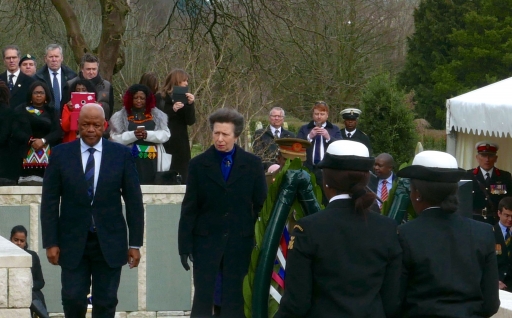CN Editor Peter Alhadeff reports from the Hollybrook Memorial in Southampton, where Princess Anne attended South African commemorations on February 20 for more than 600 troops who died in the sinking of the SS Mendi a century ago.
The scale of South Africa’s losses is immediately apparent in the multiple columns of names inscribed on this First World War memorial to members of Commonwealth forces who have no known grave.
Descendants of the soldiers who died on 21 February 1917 when the troopship Mendi was rammed by another vessel in thick fog gathered alongside South African, British and CWGC representatives for the ceremony.
The South African Navy provided a guard of honour, and a military band, for a service that included speeches, wreath-layings by relatives, the sounding of the Last Post, and the South African and British national anthems.
Most of the men lost on the Mendi were black South African troops, recruited for labouring duties, such as building defences and repairing roads, in support of the Allied armies on the Western Front.
Leading the tributes at the Hollybrook Memorial, Jeff Radebe, Minister in the South African Presidency said: “They joined to help a global community as brothers in arms to make the world safe for all its people. They temporarily suspended all their demands for equality so that the human race could be saved from itself.”
 Natalia Sifuba was among relatives who laid wreaths. She is a fifth generation descendant of the Reverend Isaac Dyobha, who delivered final words of encouragement to the troops on SS Mendi: “Be quiet and calm, my countrymen, for what is taking place is exactly what you came to do. You are going to die, but that is what you came to do.” (Photo: Centenary News)
Natalia Sifuba was among relatives who laid wreaths. She is a fifth generation descendant of the Reverend Isaac Dyobha, who delivered final words of encouragement to the troops on SS Mendi: “Be quiet and calm, my countrymen, for what is taking place is exactly what you came to do. You are going to die, but that is what you came to do.” (Photo: Centenary News)
At sea, a South African frigate marked the Centenary on February 21, with the laying of a wreath above the wreck site of the SS Mendi off the Isle of Wight.
Most of the troops who perished on the Mendi have no grave but the sea, and are commemorated on the Hollybrook Memorial.
But the remains of 19 men were recovered. Their graves can be found in cemeteries along the English south coast, in France and in the Netherlands.
Nine of those soldiers lie at Milton Cemetery in Portsmouth, where a commemorative service was held on February 17.
South Africa’s annual commemorations of the Mendi disaster, introduced in the post-apartheid era, have raised wider awareness of the tragedy and the contribution of the South African Native Labour Corps to the British war effort in WW1.
Since 2003, the Mendi has given its name to South Africa’s highest award for bravery.
Speaking at the Hollybrook centenary commemorations, UK Foreign Office Minister Tobias Ellwood said: “The dignity and bravery with which the men of the South African Native Labour Corps met their fate on the SS Mendi was typical of the dignity and bravery of those who served South Africa throughout both world wars, though it remains deeply regrettable that their sacrifice was not appropriately commemorated for many years.”
Centenary News update, August 2018: SS Mendi’s bell was presented to South Africa at a ceremony in Cape Town attended by President Cyril Ramaphosa and British Prime Minister Theresa May.
 The wreaths at the Cross of Sacrifice (Photo: Centenary News)
The wreaths at the Cross of Sacrifice (Photo: Centenary News)
For more information about the SS Mendi disaster and the South African Native Labour Corps, see the blog and video ‘Let Us Die Like Brothers’ on the Commonwealth War Graves Commission (CWGC) website.
Posted by: Centenary News Editor
Images: Centenary News
